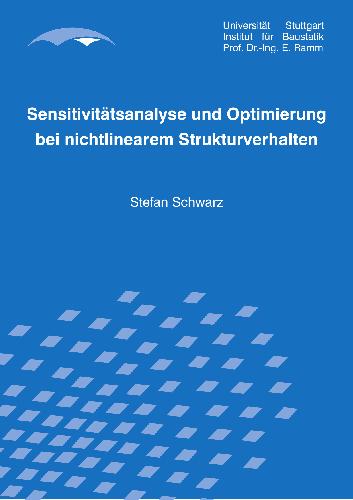Schwarz S.3-00-007419-8
To generate meaningful and reliable structures by using the methods of structural optimization it is essential to gather the real, in general nonlinear structural behavior already for the optimization process. The design problems of interest often lead to nonlinear optimization problems which can be solved efficiently by gradient based methods. Thus, it is necessary to compute the sensitivities, that are the gradients of the optimization criteria with respect to the optimization variables. Because the optimization criteria depend in general on the structural response, the theoretical and computational complexity of the sensitivity analysis is dominated by the mechanical and numerical model.This work focuses on developing and implementing an analytical approach for the sensitivity analysis (SA). The structural response is characterized by an elastoplastic material behavior with strain hardening and softening as well as geometrical nonlinearities, and is simulated by a Finite Element method. A Prandtl-Reuss model is applied to describe the elastoplastic material which leads to path-dependent response. In turn, this requires a special procedure to treat the also path-dependent SA.A variational, direct formulation for the analytical SA is presented. The advantages of this formulation in the context of elastoplasticity are discussed.The proposed procedure is consistent with the one for computing the structural response. Due to its generality, the proposed SA can be applied to diverse optimization problems.The influence of the mechanical and numerical model on the optimization procedure and the optimization results is demonstrated with selected examples. For maximizing the ductility and minimizing the weight considering constraints on the structural stability the influence of the material model on the optimum topology and shape is studied.The importance of subsequent shape optimization following a topology optimization step is shown. | |






Reviews
There are no reviews yet.